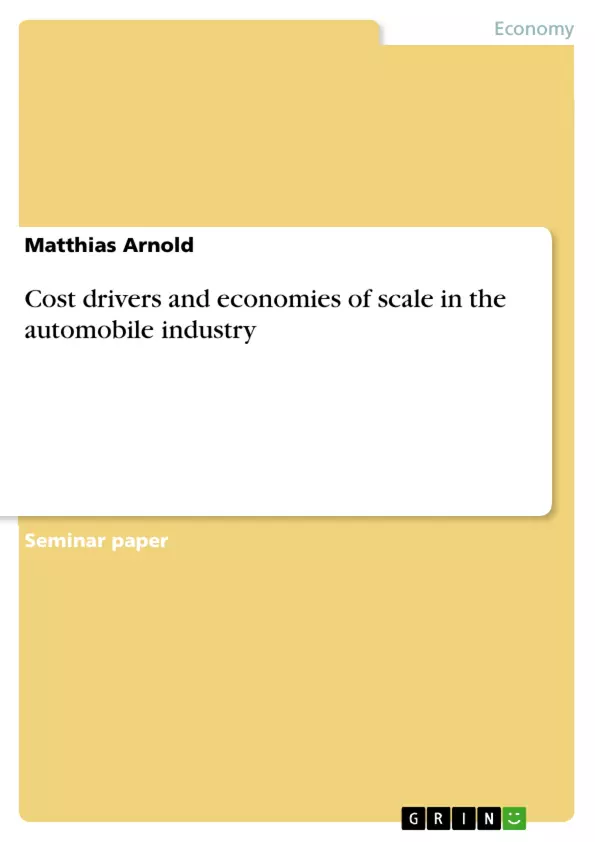This assignment aims at comparing and contrasting the driver of costs in the automotive industry, both in the short and the long run. Secondly it critically evaluates the benefits from economies of scale in the global automobile industry. The global automobile manufacturing sector accounts to a sales value of $ 1,172 billion in 2004 with a cumulated annual growth rate of 2.7% over the last 4 years. Whereas currently sales in the US are ranked first with stagnating 37%, followed by Europe with also static 30%, rising sales figures in China and India clearly show the growth regions of the next decade (Datamonitor 2005). This slack in well-established markets combined with hard competition from Asia as well as rising costs of production concludes in serious problems for the western giants (Economist 2005). In the first part of this paper, the cost drivers are analysed and implications for the automobile industry are drawn.
Normally a mature stage of a sector’s life leads to hard and fast competition and an industry consolidation with only the biggest one’s surviving. Interestingly, while clearly being in an mature stage of the industry lifecycle, the biggest companies, excluding Toyota, are the most unprofitable in the automobile sector (SEIDELet al2005). The second part of this assignment therefore evaluates the validity of the theory of economies of scale in the automobile sector.
Inhaltsverzeichnis (Table of Contents)
- Introduction
- Cost drivers
- Short run
- Long run
- Economies of scale
Zielsetzung und Themenschwerpunkte (Objectives and Key Themes)
This assignment analyzes the cost drivers within the automobile industry, comparing short-term and long-term perspectives. It also examines the benefits of economies of scale in the global automobile industry.
- Cost drivers in the short and long run
- Benefits and limitations of economies of scale in the automobile industry
- Competitive advantages and disadvantages of different automobile manufacturers
- The influence of global market trends on the automobile industry
- The role of product development and innovation in the automobile sector
Zusammenfassung der Kapitel (Chapter Summaries)
The assignment begins by defining and analyzing the cost drivers in the short run. It identifies key variables such as labor, raw materials, and distribution costs, highlighting the influence of factors like labor laws, union agreements, and fluctuating oil prices. The long-term perspective then focuses on investments in production facilities, product development, marketing, and financing.
The second part explores the concept of economies of scale within the automobile industry. It examines the theoretical benefits of large-scale production processes, bargaining power, and cost distribution. The paper then delves into the realities of the industry, noting the profitability of different manufacturers and analyzing the potential drawbacks of diseconomies of scale.
Schlüsselwörter (Keywords)
This assignment focuses on the cost drivers in the automobile industry, examining both short-term and long-term perspectives. Key concepts include economies of scale, diseconomies of scale, competitive advantages, production processes, marketing, product development, and the influence of global market trends on the industry.
- Citar trabajo
- Matthias Arnold (Autor), 2005, Cost drivers and economies of scale in the automobile industry, Múnich, GRIN Verlag, https://www.grin.com/document/55704



